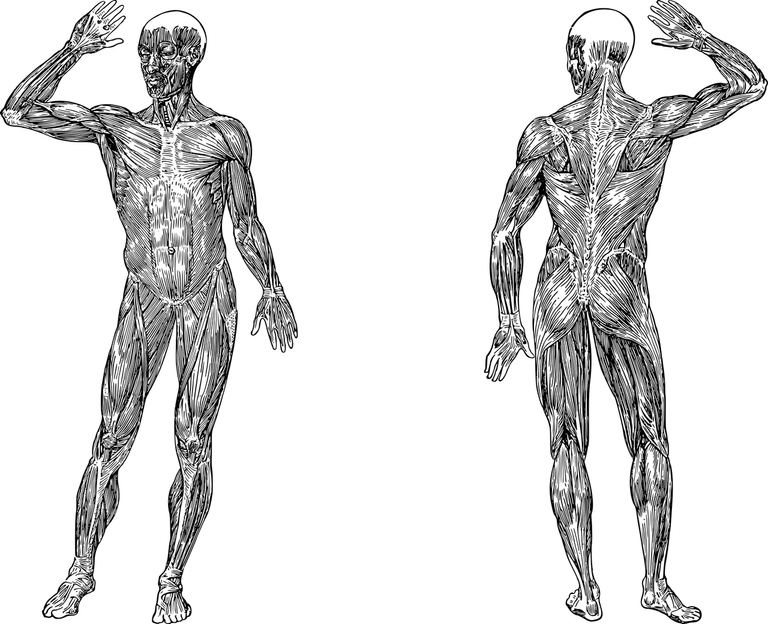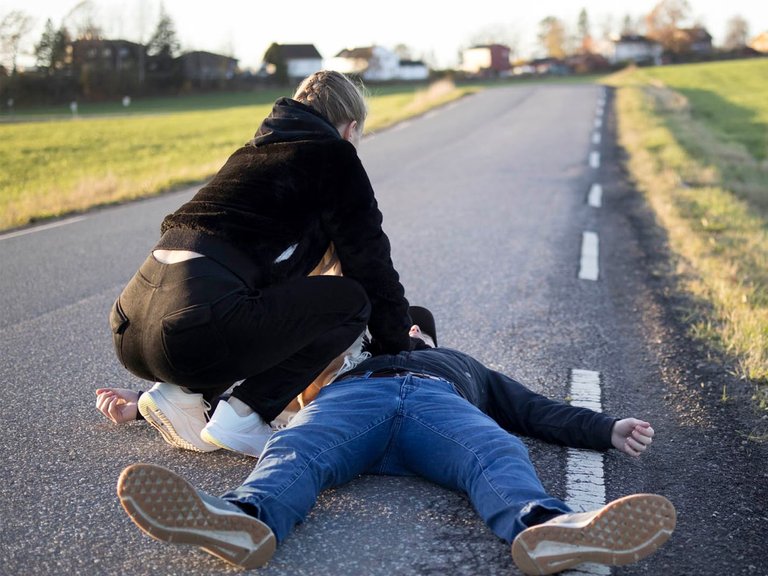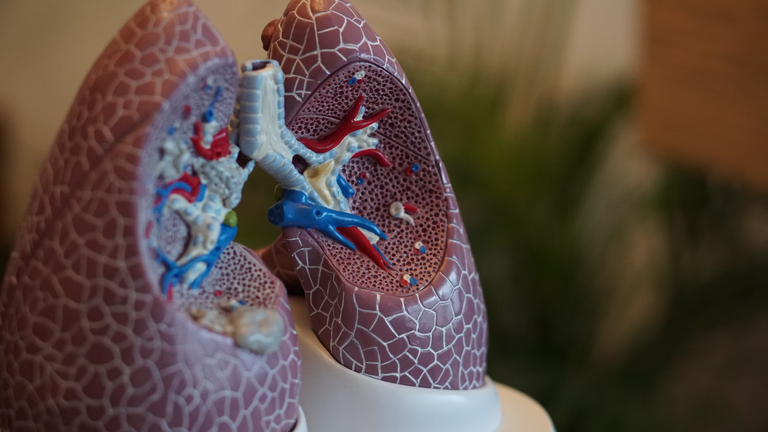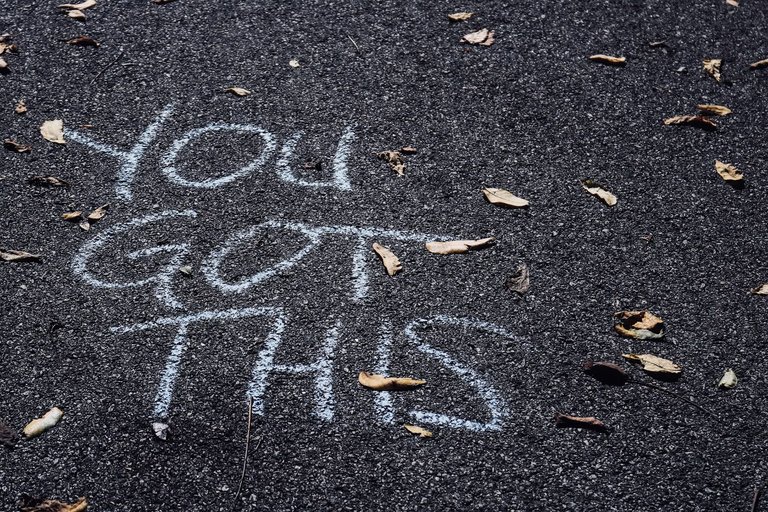Imagine you're walking home with a loved one who was perfectly healthy. Both of you just left the gym after what was a delightful workout session. You turn away from there to focus on the keyhole and you hear a thump on the floor.
You turn to the side and you hear the short sentence from the title of this post.
Everything you do from there will come from your reservoir of panic you stored for justincasities like this.
I remember having things change from me like this when my cousin who was about 10 years older than me did a popular wrestling move on me because I won him in a video game. The body slam includes taking the victim on your shoulders with their thighs and abdomen on the face then slamming their back and neck on the wrestling floor/bed (don't try this at home).
The Batista Bomb!!!
As I landed with my neck against the bed, my trachea clamp shot and I struggled to get air. I wheezed "I can't breathe".
"I can't breathe" is such a popular phrase and I think that's because it is the straightest line to explain what the person may be doing. They might be holding their neck indicating that they are choking or grabbing their chest or simply lying flat said in a lethargic manner. Regardless of how they are you need to do something about it but nobody is teaching you about it in a way that you would like to learn.
Luckily for you, I have lived a very funny life and I find it hard to learn so I can explain things in a very simple way that you'll like.
Genesis
In the beninging, in theh benin...
The problem starts with the respiratory tract okay? The respiratory system consists of a Y-shaped pipe connected to a pair of elastic balloons. The main pipe takes in the air before dividing it into branches with their balloons.
The pipes are the main trachea and its right and left branches while the baloons are the lungs.
Negative pressure is created around the balloons as the thorax increases by the effects of the diaphragm.
Long story short air goes into the balloons and the balloons expand. within the balloon air exchange takes place. Carbon dioxide carried by the blood is let out while oxygen is taken in.
The process is affected by electrical factors related to the nerves, mechanical factors related to the structures and also chemical factors.
Indirect and direct causes

Image by Gordon Johnson from Pixabay
In medical school, we do this thing where instead of cramming causes, we go "from top to bottom!" So for this post, we'll talk about causes related to the head, neck, chest, abdomen and then the legs.
Head:
So why would something in the head cause a person to screech out that they can't breathe? We could have physical causes that block the orifices that lead to the Y-shaped pipe.
This can happen to newborn babies
Q: But newborns can't talk.
A: That's not the point! If they could they would say, "I can't breathe!"
The fluid from the birth process can prevent air from following its path down the respiratory tract. This is why midwives preferentially hold the baby on the mother's belly so the fluid drips down and out. We also want to apply suction to the mouth and the nostrils.
Moving to criminology, placing a pillow over a person's head as you suffocate them achieves the same results as the fluid in the case of a baby.
One more ominous problem is the occupation of space that arises from the mass effect on the respiratory centre of the brain. This can be due to an abnormal growth a bleed or any other cause that presses against this center. This can happen in patients with cancer or other neoplastic growth, trauma to the head and resultant bleeding.
Neck:
The neck houses the main stem of the Y-shaped trachea and its two branches. In my childhood accident, I gave an example of a mechanical accident involving the neck.
Much of what happened was a collapse of the windpipe and this can happen in other more straightforward ways like a simple punch to the neck. This is commonly used in self-defence if you do it well enough the offender might even say "I can't breathe" too.
Another common mechanical cause might be due to food getting stuck within the windpipe while eating. This happens when a person is eating so fast that they hardly have time to take in air and finally swallow while trying to breathe. The prevalence is probably highest in competitive eaters.
Chest:
This is where the lungs or balloons are located and injury can harm them in many ways. Injury to the lungs can even take place from the ribcage as a single bar breaks and punctures one of the lobes.
Sometimes the injury might take place from the air we breathe such as smoke containing air can cause inhalational injury to the lungs.
Then some stabs or cuts cand take place after an accident.
Other heart-related conditions can lead to flooding of the lungs with fluid for example heart failure...
Abdomen:
The musculature that powers breathing is in close contact with the abdomen and structural changes that take place in the abdomen can cause limitations in the expansion of the lungs thereby causing the person to have difficulty breathing.
Sometimes this may be a build-up fluid or an actual solid growth like a tumour. Regardless of how it happens, it eventually leads to limitations in breathing.
legs:
A very good question to ask is how the legs might be involved with the lungs and the answer lies in the connecting conduit that takes blood around the body. In a sense, the build-up of a clot can take place anywhere, especially after surgery.
But the type of clothes normally seen in medicine are those that start in the legs. The reason why it is so common is that the risk associated with its formation is not far off from normal life.
It includes:
This is more common than having a clot form from surgery.
Regardless of how it happens, the clot can travel into the right ventricle of the heart that takes deoxygenated blood to the lungs and from there it can stop the oxygenation process and cause the person to suffer from lack of oxygen.
How to save a life
It is important that I stress that no one knows how to save a life, especially from the perspective of medicine. Doctors, Nurses and other healthcare workers all work to create the perfect conditions for life to flourish despite bad conditions but no one knows how to save a life.
You can water a plant but you can not make it grow.
The way to manage breathing problems mostly follows the ABCs of resusitation.
A- Airway
B- Breathing
C- Circulation
Make sure you and the person you are trying to save are safe. Take them out of the pool of water or whatever environment that might be causing them to have difficulty breathing.
Airway
Check if there is any solid or liquid blocking the two different paths to the lungs and clear them off. For babies like I said this is partly why we leave them on the mother's abdomen so so fluid drips down but you can't exactly do that for an adult now can you? For adults applying suction for liquids might suffice or keeping them on the left lateral sides.
Ensure there is no solid and if there is any, take it out by any safe means. Be careful for patients who might be seizing they might clench their teeth and bite your finger.
Breathing
Look at the chest for rise and fall and make sure you are seeing that while listening for breathing. You can do both by placing your ear close to the nostrils and looking at the chest.
Take a quick note of this so when you start resuscitating you know what you are dealing with.
Circulation
Check for pulsation from the wrist prefarrably or in more dire circumstances the neck. The radial artery is easy to locate below the palmar surface below the thumb and the carotid is located around the angle of the jaw bone.
What you are looking for is pulsation between 70 to 100 beats per minute. Anything more or less and you might have trouble on your hands.
You also want to find any source of circulatory compromise through bleeding. Ideally, the victim should be exposed in the hospital but in public one might be mindful of the privacy of the causality. Regardless, however, most people would be happy you saved their life at the expense of their privacy.
If you have cleared the airways and you have made sure there is no bleeding. For people who are not breathing or lack pulsation, you need to commence chest compressions. This helps to assist with cardiopulmonary function until they regain it.
Call for help!
Resuscitation is a difficult process and may require you to shift locations, don't do it on your own. Tell people what to do, say the name of the person. @enforcer call the ambulance @gentleshaid clear the area @belemo hand me the towel.
For you reading:




